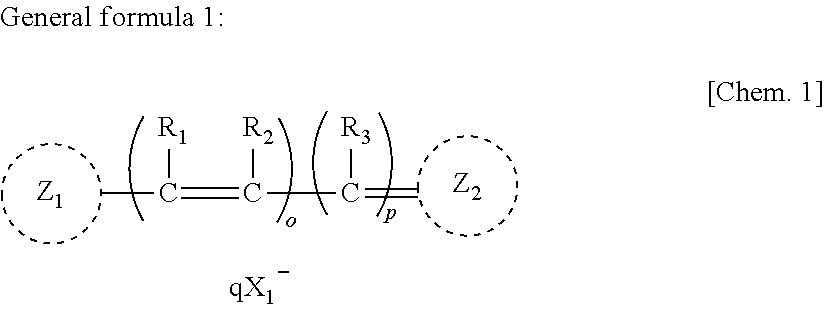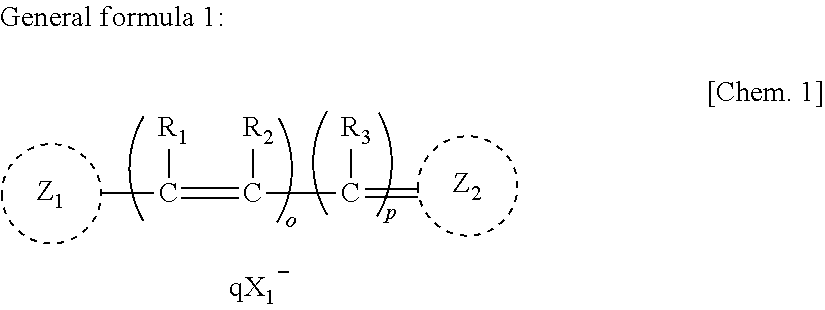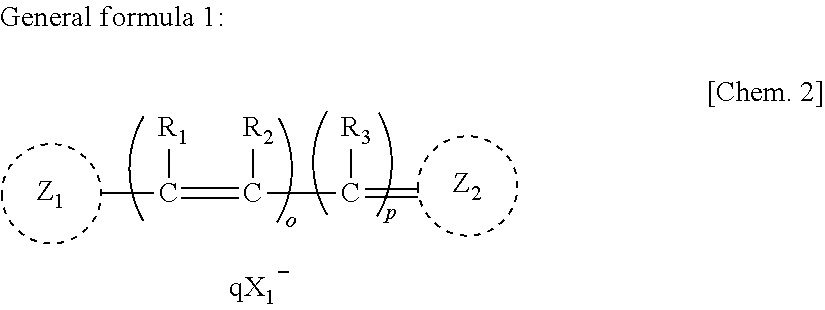Anti-neurodegenerative disease agent
a neurodegenerative disease and anti-neurodegeneration technology, applied in the direction of antinoxious agents, drug compositions, metabolic disorders, etc., can solve the problems of inability to achieve cylinders in central neurosystems, inability to inhibit neurodegeneration, and inability to detect cylinders, etc., to accelerate neurite outgrowth, inhibit neurodegeneration, delay or improve the symptom and the onset of pathema
- Summary
- Abstract
- Description
- Claims
- Application Information
AI Technical Summary
Benefits of technology
Problems solved by technology
Method used
Image
Examples
experiment 1
Effect of Pentamethine Cyanine Dye on Injury of Neurocyte
[0044]Neurocytes are known to be quite susceptive to injury induced by nutrient starvation and active oxygen. Such characteristic feature of neurocytes has been recognized as a causative for inducing neurocyte death as found in neurodegenerative diseases including Alzheimer's disease and Huntington's disease. The following experiment was conducted to examine the influence of pentamethine cyanine dye on injury of neurocyte induced by cytotoxic factors.
[0045]In this experiment, the compound represented by Chemical formula 2 (“NK-4” produced by Hayashibara Biochemical Laboratories, Inc., Okayama, Japan) was used as a test specimen. Since NK-4 is scarcely dissolvable in water, it was dissolved in “D8418”, a product number of DMSO, commercialized by SIGMA Corporation, Tokyo, Japan, to give a concentration of 5 mg / ml, followed by filtering the resulting solution with a membrane filter (“MILLEX-LG SLLGO25SS”, a product name of Millip...
experiment 2
Effect of NK-4 Administration on Behavior and Brain Tissue of Hamster with Cerebellar Ataxia
[0053]Since NK-4 was confirmed to have a neurodegenerative inhibitory action in Experiment 1, hamsters with cerebellar ataxia (cerebellar ataxia is called “cerebellar A” and hamsters with cerebellar ataxia are called “hamsters with cerebellar A”, hereinafter) as a suitable model for human neurodegenerative diseases (e.g., spinal cerebellar degeneration) were subjected to examine the influence of NK-4 administration on their behaviors and brain tissues. Twenty-five hamsters with natural mutation (Nna1 inhibition), which are known to lose Purkinje's cells after three-weeks of age and then induce a spontaneous onset of kinetic motor ataxia after seven-weeks of age (see Akita K. et al., “J. Neurogenetics”, Vol. 21, pp. 19-29, 2007), had been fed at Hayashibara Biochemical Laboratories., Inc., Okayama, Japan, were randomly allocated to the test groups 1 to 5, five heads in each group, as shown in ...
experiment 3
Action of Dye Compounds Other than NK-4
[0065]In Experiments 1 and 2, since NK-4 was revealed to have protection action on cytotoxic factor, neurodegenerative inhibitory action, reduction inhibitory action on Purkinje's cells capable of inducing cerebellar A, neurocyte reduction inhibitory action, etc., it was examined whether dye compounds other than NK-4 (may be simply called “Compounds”, hereinafter) have a similar action. In addition to the compounds represented by Chemical formulae 2 and 4 to 9 in Table 6, 232 types of compounds (239 specimens in total) represented by the following Chemical formulae 10 to 241 were examined for activity of cell proliferation and outgrowth promoting action on nerve process against PC12-HS cells based on cell proliferation accelerating activity (Evaluation method A) and nerve process outgrowth action (Evaluation method B). The data were in Table 6. In the case that an effect lesser than each standard criterion was merely obtained in the following t...
PUM
| Property | Measurement | Unit |
|---|---|---|
| Volume | aaaaa | aaaaa |
| Volume | aaaaa | aaaaa |
| Volume | aaaaa | aaaaa |
Abstract
Description
Claims
Application Information
 Login to View More
Login to View More - R&D
- Intellectual Property
- Life Sciences
- Materials
- Tech Scout
- Unparalleled Data Quality
- Higher Quality Content
- 60% Fewer Hallucinations
Browse by: Latest US Patents, China's latest patents, Technical Efficacy Thesaurus, Application Domain, Technology Topic, Popular Technical Reports.
© 2025 PatSnap. All rights reserved.Legal|Privacy policy|Modern Slavery Act Transparency Statement|Sitemap|About US| Contact US: help@patsnap.com



